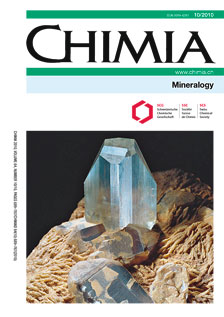Defining Asbestos: Differences between the Built and Natural Environments
DOI:
https://doi.org/10.2533/chimia.2010.747Keywords:
Amphibole, Asbestiform, Asbestos, Chrysotile, Diffraction, Microscopy, SerpentineAbstract
Asbestos – while most think they know what this material is, few understand the current issues surrounding it. Few would also realize that asbestos is the form of a mineral, and even fewer would know that there are different types of asbestos, that not only had different industrial applications, but pose differing health risks when inhaled. Asbestos was in wide-spread use mid-last century in many consumer products, and no doubt saved thousands of lives, but by the latter part of last century concerns over its health risk caused its use to wane, to the point it was removed from many buildings. So in many ways the asbestos story was coming to an end in the 1990s, but two events in the USA – the vermiculite ore produced from Libby, Montana which contained amphibole asbestos and was used in a million homes in the USA as attic insulation and the concern for exposure to asbestos occurring in its natural setting in El Dorado Hills, California led to an increased concern of the potential for low-level environmental exposure to asbestos to the general public. The current dilemma we find ourselves in, especially in the USA, deals with the relationships between our knowledge of handling asbestos and an understanding of its risk potential in the built environment versus the natural environment. And one perfect metaphor for this is the term used by many non-geologists to differentiate asbestos in the built vs natural environment – 'naturally occurring asbestos'. Clearly a misstatement, but only one of many we must deal with as we struggle to understand the risk to humans of natural occurrences of asbestos. This paper will try and address some of these issues centering around those occurring in the USA.Downloads
Published
2010-10-29
Issue
Section
Scientific Articles
License
Copyright (c) 2010 Swiss Chemical Society

This work is licensed under a Creative Commons Attribution-NonCommercial 4.0 International License.
How to Cite
[1]
Chimia 2010, 64, 747, DOI: 10.2533/chimia.2010.747.







